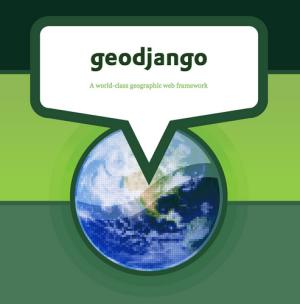 GeoDjango is an official branch of the Django web framework that converts it into a powerful geographic web framework. GeoDjango is delivered under BSD license and is cross-platform (Linux, Windows, Mac OS X, and Solaris platforms). It provides Django with geographic models, database APIs, functions, utilities and supports the spatial capabilities of the PostGIS, MySQL, and Oracle databases. This tool makes the task of creating geographic information systems (GIS) and rich geographic web apps (e.g. location-based service), much easier.
GeoDjango is an official branch of the Django web framework that converts it into a powerful geographic web framework. GeoDjango is delivered under BSD license and is cross-platform (Linux, Windows, Mac OS X, and Solaris platforms). It provides Django with geographic models, database APIs, functions, utilities and supports the spatial capabilities of the PostGIS, MySQL, and Oracle databases. This tool makes the task of creating geographic information systems (GIS) and rich geographic web apps (e.g. location-based service), much easier.
GeoDjango installation is based on Python, Django, and two other components: a spatial database and geospatial libraries. The recommended spatial database is PostGIS, but there are some others you can use: MySQL Spatial, Oracle Spatial, PostgreSQL, SpatiaLite. There is even wider choice of open source geospatial libraries: GEOS (Geometry Engine Open Source), GDAL (Geospatial Data Abstraction Library), proj.4 (Cartographic Projections library), GeoIP, etc.
The core of GeoDjango is a high-performance built-in “pythonic” API to some of the above mentioned geospatial packages, like GDAL, GEOS, PostGIS. The interfaces include powerful functionality for converting, manipulating, querying, storing, and importing spatial data using pure Python. The geographic web formats GeoDjango supports include KML, GML, GeoJSON, WKT, WKB, and GeoRSS.
So the main GeoDjango features are:
- extensions to Django’s ORM for spatial data examination and manipulation;
- intuitive Python APIs for GIS geometry operations and data formats;
- built-in geographic admin that supports the manipulation and visualization of spatial data;
- Django model fields for OGC geometries;
- embed location information in RSS feeds, Atom feeds or any scrapable data sources based on open web standards.
GeoDjango is flexible and robust branch of Django that allows easy portrayal of geospatial data inside the websites. It covers plenty of functions from generating simple maps with Google or OpenStreetMap to building an entire location-based search website that requires extensive use of geo-enabled databases. To get more information visit geodjango.org.
